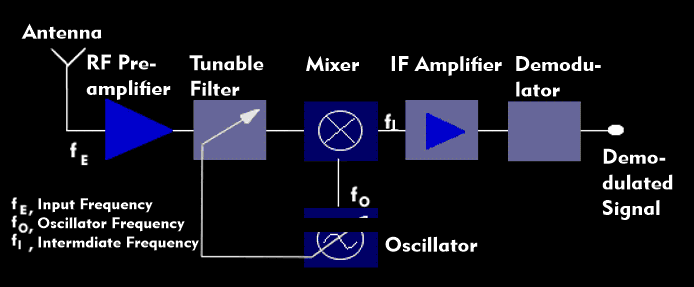superheterodyne receiver
In the early years of broadcasting technology, it was technically impossible to realize highly selective and tunable filters and amplifiers over larger frequency ranges. For this reason, an intermediate frequency(IF) was generated by mixing the input frequency with a tunable oscillator frequency. This intermediate frequency is always constant and can be amplified by selective amplifiers with high selectivity.
This principle is used in the superheterodyne receiver, i.e. in all radio and television sets but also in other RF-basedreceivers.
The receiving section of a VHF receiver shall serve as an example. The transmitting frequencies for VHF are between 87 MHz and 108 MHz. If this input frequency is mixed with a tunable oscillator frequency between 98 MHz and 118 MHz, then the mixture of the oscillator frequency and input frequency results in the intermediate frequency of 10 MHz. This intermediate frequency is available at the output of the mixer and is amplified in a highly selective IF amplifier. The IF signal is then demodulated in the demodulator and further processed as an analog or digital signal.
If the selection capabilities and selectivity of the superheterodyne process are not sufficient, they can be increased by a further downstream selection receiver. This is referred to as double super.

